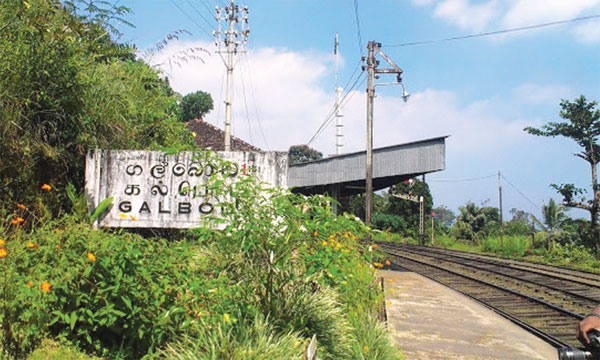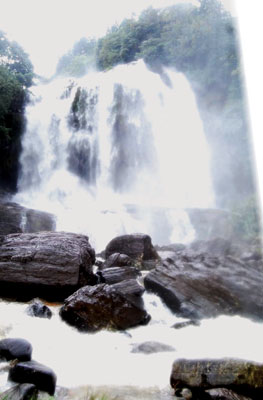|
Galboda Ella
Potable water was supplied to the Governors’ palace in Colombo from
Galboda in colonial times.
|

The Galboda station |
|

The cascading falls |
The Galboda waterfall is a one hour walking distance from the railway
station. It is 30 metres in height, beautiful due to the high rainfall
received to the catchment area throughout the year.(the closest town is
Watawala, where the highest annual rainfall in the country is received).
Therefore, unlike other waterfalls, travellers are advised to visit
Galboda waterfall in August, the dry season, because the natural water
pool is safe for bathing. Until you pass “Inguruoya”, the railway
station before Galboda, the climate is quite good. But when the train
reaches Galboda, passing two tunnels; the climate changes to heavy
showers. Galboda is a small village inbetween Watawala and Nawalapitiya.
The main access to the village is the railway track and the first
glimpse to the waterfall could be had from here. The annual rainfall
here exceeds 4500mm. Sixty percent of the rain comes from the south-west
monsoon (the dry season is January to February).
At certain times of the year, the water cascades in two streams.
Growing in the surrounding woodland is a rare species of orchid and the
vicinity is home to a wide variety of wildlife. Among them are 12
species of reptiles and four are only found in Sri Lanka. The upper
section of the fall is unique in its biodiversity, thus it is of
paramount importance to limit any potential danger to the area. The name
of the fall, (Galboda means ‘fall adjoining the stone’) is said to be
derived from the large boulder situated at its foot, though another
theory is that the water here is heavier(Gal meaning heavier) than
anywhere else on the island.
- Internet |


